For the very first contact
Online booking platform for Kalasatama Hosptial
Designers: Jaeyong Lee, Emma-Sofie Kukkonen, Karoline Kwon, Eevi Saarikoski, Amar Nath Shaw
My Roles in the team: Design research, service design, UI/UX
Client: City of Helsink
This service design project was for the new Kalasatama Health and Welfare Center, which is planed to start its services in 2018. City of Helsinki collaborated with students in Aalto University to improve services in the new health and welfare center.
Our team suggested building the new online booking system ‘VIVO’ with the online diagnosis system. It enables to help patients understand their needs at that moment before booking and visiting the center, minimize unnecessary calls, and decrease the irrelevant bookings. More possibilities around this idea, i.e., creating a united online booking platform for health services with online queuing services and e-profile that can be shared to other public services in Finland.
 VIVO: online booking platform with diagnosis system
VIVO: online booking platform with diagnosis system
Background
The City of Helsinki asked us to create “a new process for evaluating the service needs and creating personalized journeys in health and welfare centers”. The solution will be implemented in the Kalasatama health and welfare center, opening 2018, which will be the first to combine all health and social services under one roof. The new model calls for highly efficient processes, as it tries to both bring professionals from different fields to work together and also has to deal with patients from the old units closing in the wake of the new center.
During the process we have constantly been reflecting on the brief and recognized a central issue to be the optimization of the first contact the customer make to the center.
For our final solution we have devised a palette of concepts to rid the system of bottle-necks currently created by a gate-keeper model where professionals hold all the keys to moving forward in the system and customers have very little opportunities to control and track their own service processes.
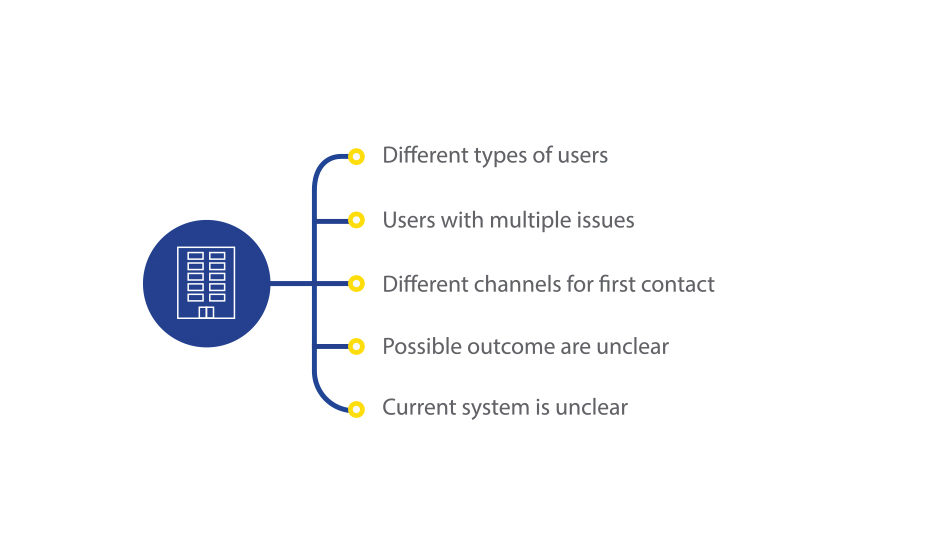 The previous usage context of Kalasatama Health and Welfare Center
The previous usage context of Kalasatama Health and Welfare Center
Desk Research
For background researches, our team digested given research reports done by Gemic and Forum Virium as well as file containing the description of the working model for Kalasatama health and welfare center. The materials by Gemic included insights from identified future user groups. Their material helped guide our initial conversations and was used in an in-class exercise to better understand the Finnish health and social system.
User Research
Interviews with customers of Kalio Health Center
We then devised a questionnaire and went to Kallio health station to ask customers more general questions regarding their experiences. We were not seeking quantity, but more in-depth insights from individuals, which is why most of the questionnaires were filled in as interviews. In the interviews we focused on gaining customer’s opinions about good service. After the interviews we went through the data and organized the findings by using an affinity diagram. We identified some key themes that were later utilized in designing the participatory workshop.
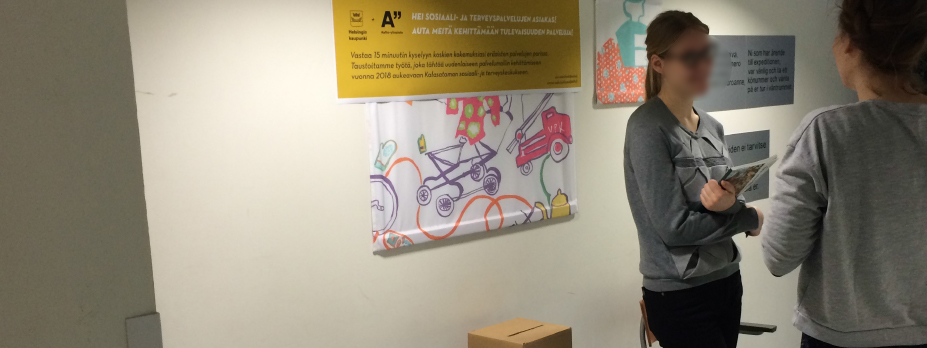 Interviewing customers in Kalio Health Center
Interviewing customers in Kalio Health Center
Hypotheses
At a certain point we started sketching the first initial concepts. We aimed to produce as great a variety of solution opportunities as possible. Some of the concepts were even a bit overlapping. Together we selected eight ideas and defined them a bit further in order to probe the customers’ opinions about them in the workshop phase.
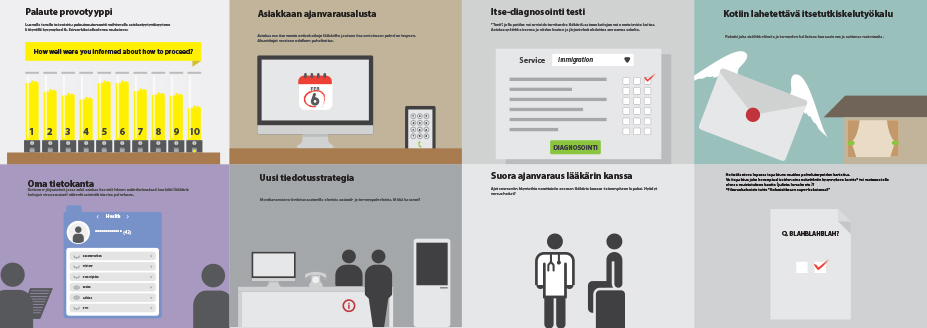 Initial ideas
Initial ideas
Co-Design workshop
We decided to base the workshop on the interview findings since we wanted to dig deeper both into people’s experiences and specific factors that form a good service experience, especially in the field of health and social services.
Also, the gathered themes remained on a quite abstract level and we wanted to understand more precisely what they meant to different people, and how they could be actualized in the service. We decided to put together a workshop, which took place on 10th Feb at Helsinki Think Company. The participants were nine Finnish people presenting different age groups as well as our contact people Hilkka and Lars.
Design Outcome
Our final solution is comprised of a palette of functions to be added to the current booking and diagnosis system. The spearhead and first step of these is an online service need assessment tool to be added to the Helsinki city website. This would aid customers to better understand their service needs before booking, decreasing unnecessary calls and appointments and at the same time help relay information and create and easy and straightforward way for the customers needs to be met. Vivo would create a better service experience through ease of use and guide the user to other services they might also need but not be aware of. The customer’s own need is the starting point, not the city’s departments.
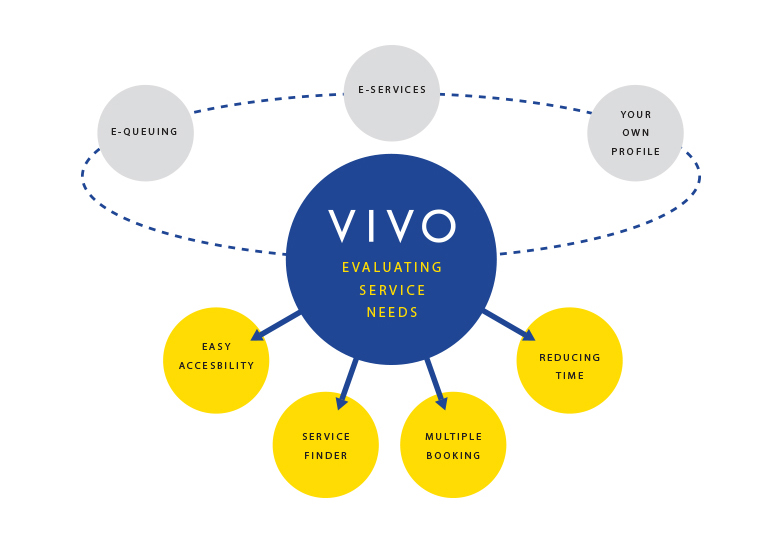 Core service ideas and user benefits
Core service ideas and user benefits
The palette also includes further possibilities, like an online booking platform, e-queuing, and customer’s own e-profile, where medical history and information can be accessed by the user and, through privacy settings, also shared with city officials. Many of these functions are already in use in the private sector, and partially already planned for the city, but not in use as of yet.
We aim to take the service slogan: “You have come to exactly the right place, how can we help you?” one step further. The appropriation both off- and online of the question “What else can we do for you?” makes the service customer centered without ignoring the financial constraints of the public sector.
The reason Vivo needs to be implemented in the Helsinki city website is to strengthen the link between the city and the services it provides and make it easier to find. We also suggest Vivo should be complimented with a publicity campaign. It could include a variety of approaches, like commercials onboard trams and prototypes/prototypes of service automats in highly visible places. This sort of promotion is obvious for the private sector, but has been neglected in the public sector.
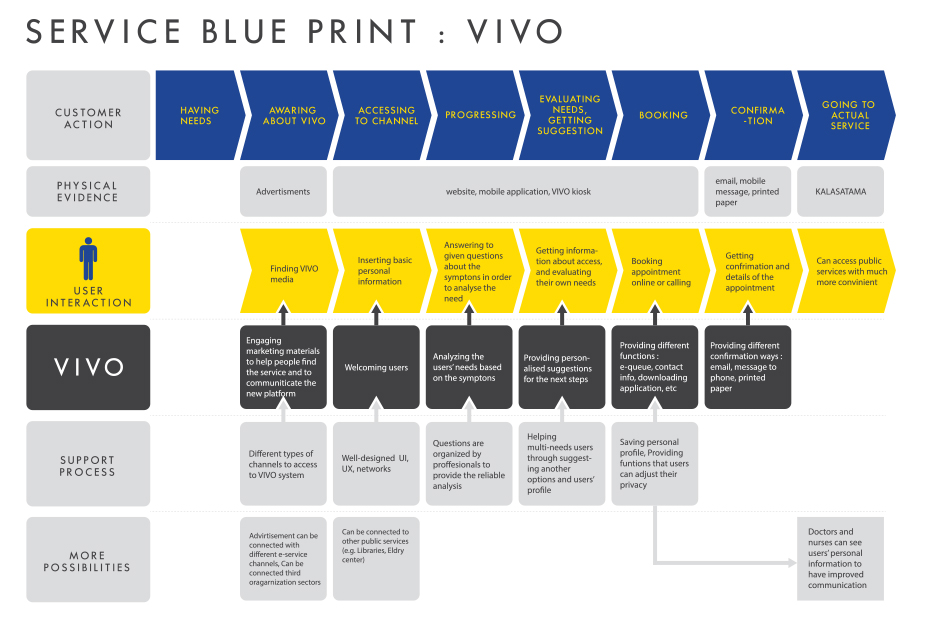 Service blueprint
Service blueprint
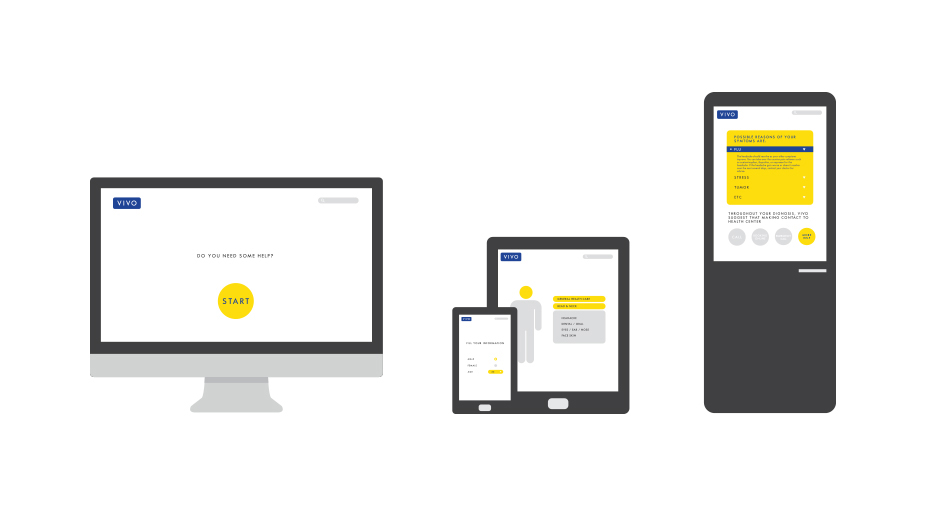 Diverse touchpoints of VIVO service
Diverse touchpoints of VIVO service
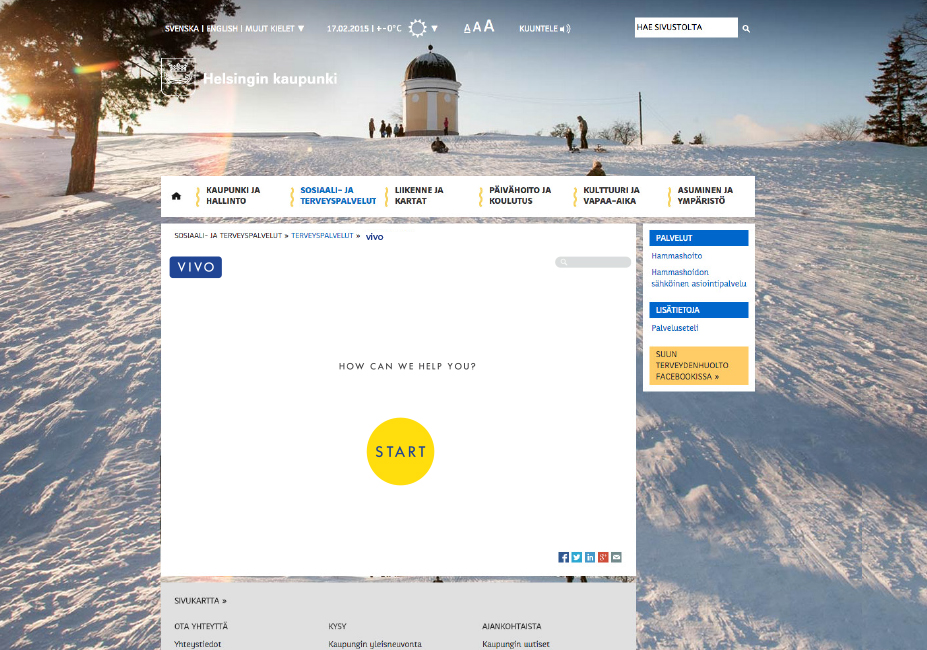 Intergration with City of Helsinki Web service
Intergration with City of Helsinki Web service